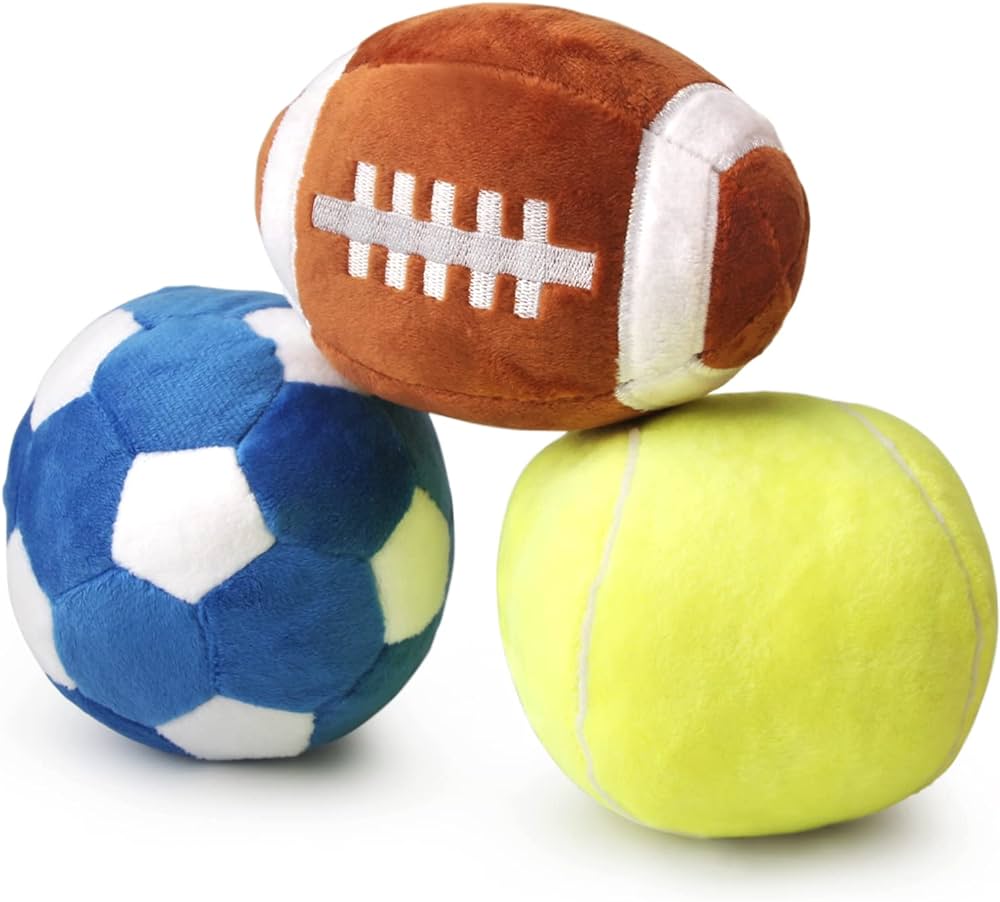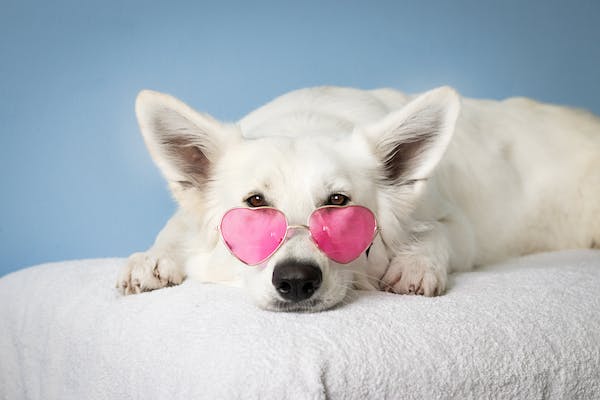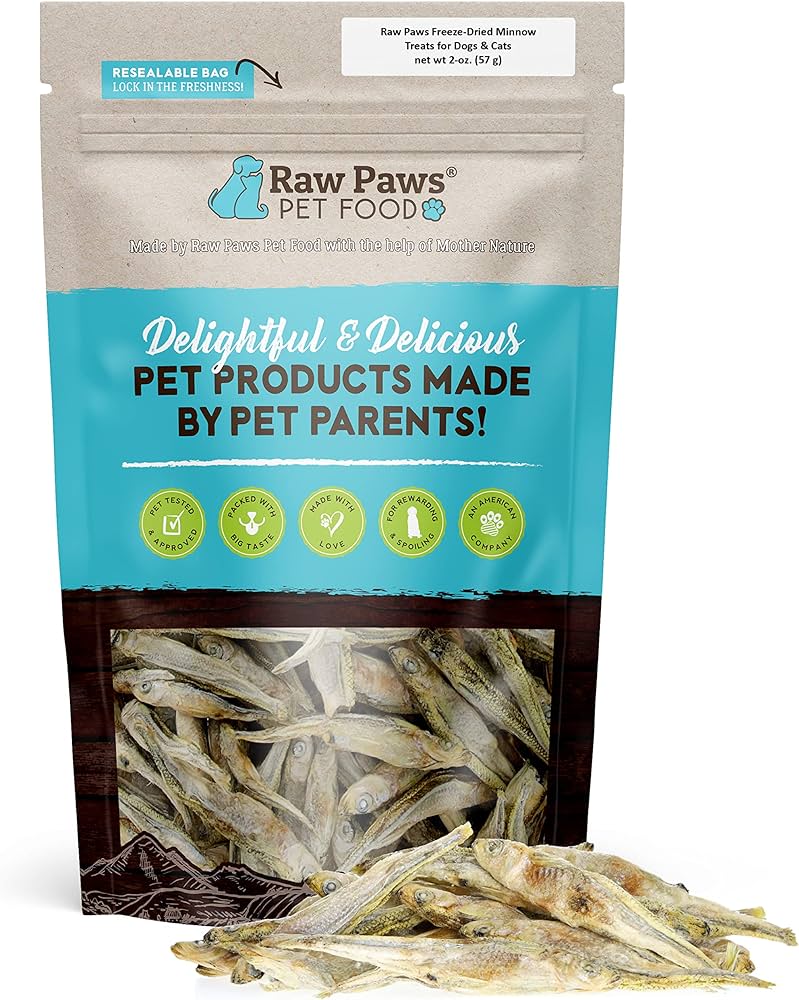If your dog doesn’t like toys, try offering different types of toys to find the ones it prefers. Some dogs may enjoy interactive toys, while others might prefer chew toys.
It’s important to observe your dog’s behavior and preferences to find the right toys that suit its interests and needs. Having a dog that doesn’t like toys can be challenging for pet owners. Toys are not only a source of entertainment but also provide mental stimulation and exercise for dogs.
Understanding why your dog doesn’t like toys is essential to address this issue and ensure its overall well-being. We will explore potential reasons why your dog may not be interested in toys and provide practical tips on how to encourage toy play. By implementing these strategies, you can help your dog develop a positive association with toys and enhance its physical and mental health.

Credit: www.amazon.com
Understanding Your Dog’s Toy Preferences
Discovering your dog’s toy preferences is essential for their happiness and stimulation. However, if your dog doesn’t like toys, there are alternative activities and enrichment options you can explore to keep them entertained and satisfied.
Understanding Your Dog’s Toy Preferences If your dog doesn’t seem to like toys, it can be frustrating and confusing. Understanding your dog’s toy preferences is the first step to solving this issue. By observing your dog’s behavior and preferences, you can identify specific toy dislikes and find the types of toys that your dog prefers. Types of Toys Dogs Prefer Dogs have different toy preferences, and understanding these preferences can help you find the right toys for your furry friend. Some dogs prefer soft and plush toys, while others may enjoy interactive toys that challenge their minds. Another preference is durable toys that can withstand aggressive chewers. Identifying your dog’s preferences can help you select the best toys for them. Observing Your Dog’s Reactions to Toys Observing your dog’s reactions to toys can provide valuable insight into their preferences. Pay attention to how your dog interacts with different types of toys. Do they show interest or disinterest? Do they engage with the toy or ignore it? By observing your dog’s behavior, you can determine which types of toys appeal to them the most. Identifying Specific Toy Dislikes In some cases, dogs may have specific toy dislikes that prevent them from enjoying playtime. Look for patterns in your dog’s behavior. Do they avoid toys of a certain texture or material? Do they show signs of discomfort or fear when presented with a specific toy? By identifying specific toy dislikes, you can avoid purchasing toys that your dog won’t enjoy. Understanding your dog’s toy preferences is essential for ensuring they have an enjoyable playtime experience. By identifying the types of toys dogs prefer, observing your dog’s reactions to toys, and identifying specific toy dislikes, you can find the perfect toys to keep your furry companion entertained and happy.Modifying Toys To Suit Your Dog’s Tastes
Dogs, like humans, have a variety of preferences when it comes to toys. If your furry friend isn’t interested in the toys you provide, you can modify them to suit their tastes. This can involve introducing new textures and materials, adjusting sizes and shapes, and adding treats or appealing scents to make the toys more enticing. By customizing the toys to your dog’s liking, you can encourage play and keep them entertained. Let’s explore these strategies in more detail:
Introducing New Textures And Materials
Dogs may have specific preferences for the textures and materials they enjoy interacting with. To appeal to your dog’s senses, consider introducing toys made of different materials, such as rubber, plush, or rope. Experiment with textures that engage your dog, such as crinkly fabrics, ribbed surfaces, or soft fleece. By offering a variety of textures, you can pique your dog’s interest and make playtime more enjoyable.
Adjusting Toy Sizes And Shapes
The size and shape of a toy can greatly impact a dog’s interest and ability to engage with it. If your dog seems disinterested in standard toys, try offering options in various sizes and shapes. Some dogs prefer toys they can easily grip and carry, while others may be more drawn to larger, bulkier items. By observing your dog’s reactions to different toy sizes and shapes, you can discover what appeals to them most.
Adding Treats Or Smells To Toys
Incorporating enticing scents or treats into a toy can capture your dog’s attention and motivate them to interact with it. Consider filling a toy with small treats or spreading a flavored paste on its surface to create an appealing aroma. This can turn a previously uninteresting toy into an exciting puzzle for your dog to explore. The promise of a tasty reward can encourage your dog to spend more time playing with the modified toy.
Teaching Your Dog To Enjoy Toys
If you’ve noticed that your dog doesn’t show much interest in toys, don’t worry! There are ways you can teach your furry friend to enjoy playing with toys. By using positive reinforcement training methods, gradual exposure to toys, and interactive toy play techniques, you can help your dog develop a love for toys and have hours of fun together.
Positive Reinforcement Training Methods
To encourage your dog to enjoy toys, positive reinforcement training methods can be highly effective. Start by selecting a toy that suits your dog’s preferences. Introduce the toy to your dog and reward them with treats or praise when they show any interest or interaction with it. This positive association will help your dog associate toys with rewards and pleasurable experiences.
Once your dog starts playing with the toy, continue to reinforce their behavior with positive rewards. Use treats or verbal praise to show them that playing with the toy is a positive and enjoyable activity. Gradually decrease the frequency of treats over time, as your dog becomes more comfortable and engaged with the toy.
Gradual Exposure To Toys
Some dogs may be hesitant towards toys due to unfamiliarity or fear. To address this, it’s essential to expose your dog to toys gradually. Start by introducing one toy at a time, allowing your dog to sniff and investigate it at their own pace. Avoid overwhelming them with a large collection of toys all at once, as this might cause anxiety or confusion.
If your dog shows fear or nervousness towards a particular toy, try using desensitization techniques. This involves slowly introducing the toy in a controlled and positive environment. Start by placing the toy near your dog while they’re in a calm state, and reward them with treats and praise for any calm or positive reactions. Gradually increase the exposure to the toy over time, ensuring that your dog feels safe and comfortable throughout the process.
Interactive Toy Play Techniques
Engaging in interactive play with your dog can help them develop a fondness for toys. Participating in play sessions with your dog allows you to bond and build trust while making the playtime experience enjoyable for both of you.
Try using various interactive toy play techniques, such as tugging or fetch games, to pique your dog’s interest. Incorporate verbal cues, such as “fetch” or “tug,” to help them understand the intended play behavior. Always reward your dog for their participation and enthusiasm during these play sessions, reinforcing the positive connection with toys.
Remember, patience and consistency are key when teaching your dog to enjoy toys. Each dog is unique, and some may require more time and effort than others. By using positive reinforcement, gradual exposure, and interactive play, you can help your dog develop a newfound love for toys and enrich their lives with engaging playtime activities.

Credit: www.facebook.com
Alternative Activities For Non-toy Loving Dogs
While many dogs enjoy playing with toys, some pups may not show interest in them at all. It’s important not to worry, as there are alternative activities you can engage in to keep your furry friend entertained and happy. In this blog post, we’ll explore some exciting options for non-toy loving dogs that will provide mental and physical stimulation.
1. Outdoor Adventures And Exercise
Outdoor adventures and exercise are fantastic ways to keep your non-toy loving dog active and entertained. Take your pup for regular walks in different environments such as parks, forests, or the beach. Allow them to explore new scents and sights while getting their daily dose of exercise. Engage in activities like hiking or jogging, which not only provide physical stimulation but also help strengthen the bond between you and your furry companion.
2. Puzzle Toys And Food Dispensers
Puzzle toys and food dispensers are ideal for non-toy loving dogs as they combine mental stimulation with mealtime. These toys are designed to challenge your dog’s problem-solving skills and keep them entertained for hours. Fill puzzle toys with treats or your pet’s regular food and watch them work their way through the different levels or compartments to access their reward. This not only encourages mental engagement but also helps prevent boredom and destructive behaviors.
3. Training And Mental Stimulation
Training sessions are a great way to provide mental stimulation for your non-toy loving dog. Teach them new tricks or practice obedience commands using positive reinforcement techniques. Dogs love the mental challenge of learning, and it helps build their confidence and strengthens the bond between you. Consider enrolling your pup in agility classes or other canine sports that provide both physical and mental stimulation. Remember to keep the training sessions short and fun to avoid overwhelming your pet.
In conclusion, if your dog doesn’t like toys, there are still plenty of alternative activities to keep them happy, engaged, and mentally stimulated. Outdoor adventures and exercise, puzzle toys and food dispensers, and training sessions can all provide exciting opportunities for your non-toy loving dog. Remember to adapt these activities based on your pet’s preferences, age, and physical abilities, and always prioritize their safety and well-being.
:max_bytes(150000):strip_icc()/willie-bones-dog-chewing-toy-646e71a6edc54eda90b90c72250ff111.jpg)
Credit: www.dailypaws.com
Frequently Asked Questions Of What To Do If Your Dog Doesn’t Like Toys
Is It Normal For A Dog To Not Like Toys?
Dogs can vary in their preferences, and it’s normal for some to not like toys.
What To Do If Your Dog Isn’t Interested In Toys?
Introduce different types of toys to find what your dog likes. Try interactive or puzzle toys to engage them mentally. Play with your dog using the toy to make it more appealing. Consider experimenting with different textures or scents. Seek advice from a veterinarian if the disinterest persists.
How Do I Get My Dog Interested In Toys?
To get your dog interested in toys, try interactive play, rotating toy selection, using treats, and positive reinforcement. Engage in play and make it fun for your dog to create excitement around the toys.
Why Doesn’t My Dog Like Certain Toys?
Some dogs may not like certain toys due to personal preferences or sensory issues. Dogs have different tastes and may prefer certain textures or types of play. It’s important to try different toys to find what your dog enjoys.
Conclusion
So, if your furry friend isn’t interested in toys, don’t fret! There are plenty of alternative ways to keep them engaged and happy. Remember that every dog is different, so try out a variety of activities to find what works best for your pup.
Whether it’s puzzle games, training sessions, or interactive playtime, there are countless options to stimulate their mind and keep them entertained. So, don’t give up and keep exploring new ways to incorporate fun into your dog’s life. Happy bonding!




Мадонна, икона поп-музыки и культурного влияния, продолжает вдохновлять и поражать своей музыкой и стилем. Её карьера олицетворяет смелость, инновации и постоянное стремление к самовыражению. Среди её лучших песен можно выделить “Like a Prayer”, “Vogue”, “Material Girl”, “Into the Groove” и “Hung Up”. Эти треки не только доминировали на музыкальных чартах, но и оставили неизгладимый след в культурной и исторической панораме музыки. Мадонна не только певица, но и икона стиля, актриса и предприниматель, чье влияние простирается далеко за рамки музыкальной индустрии. Скачать mp3 музыку 2024 года и слушать онлайн бесплатно.
https://ironway.ru/forum/viewtopic.php?f=5&t=9528
http://4computers.getbb.ru/viewtopic.php?f=10&t=18122
https://samaramed.ru/forum/health/topic_39949.html
https://nvspwiki.hnue.edu.vn/index.php?title=Th%C3%A0nh_vi%C3%AAn:JuliePatten8
http://atora.ru/blogs/1/istoriya-audioformatov-ot-vinila-do-striminga.php
https://energiyacosmosa.winbb.ru/viewtopic.php?id=1216#p5166
https://marvelvsdc.faith/wiki/User:DSYVeronique
http://ford-talks.ru/viewtopic.php?f=20&t=3642
https://to.iboard.ws/viewtopic.php?id=4212#p8137
http://honey.ukrbb.net/viewtopic.php?f=18&t=9948
https://arhonskforum.rolka.me/viewtopic.php?id=2151#p2949
https://nemezida.group/club/user/1021183/forum/message/8400/63995/#message63995
https://vltk.vvvvvvaria.org/w/Mp3gid.co
https://sputnikrubalka.forumrpg.ru/viewtopic.php?id=381059#p384628
http://doorsmania.borda.ru/?1-6-0-00001153-000-0-0-1706616995
https://imoodle.win/wiki/User:MauriceV77
http://offtop.ru/devchonki/view.php?t=2913967&part=4&neworrep=1&
https://alligator.spb.ru/forum/index.php?PAGE_NAME=profile_view&UID=70361
https://ruhelp.ruhelp.com/viewtopic.php?id=5966#p43184
http://forum.jeep-club.by/index.php?/blog/40/entry-2075-deep-house-%D0%B3%D0%BB%D1%83%D0%B1%D0%B8%D0%BD%D1%8B-%D0%B7%D0%B2%D1%83%D1%87%D0%B0%D0%BD%D0%B8%D1%8F-%D0%B8-%D0%B8%D1%81%D1%82%D0%BE%D1%80%D0%B8%D1%87%D0%B5%D1%81%D0%BA%D0%B8%D0%B9-%D0%BF%D1%83%D1%82%D1%8C/
http://www.nemoskvichi.ru/forum/viewtopic.php?f=31&t=144408
https://forum.qwas.ru/nayti-novinki-muziki-2024-goda-mojno-na-sayte-mp3bit-t18378.html
https://ukro.forumotion.me/t4445-topic#9640
http://xn--j1abfeccmj1d1c.xn--p1ai/forum/?PAGE_NAME=profile_view&UID=18602
https://spshn.ru/plugins/forum/forum_viewtopic.php?344289.-0#post_344289
https://lenka.ruhelp.com/viewtopic.php?id=2038#p46607
http://forummsk.getbb.ru/viewtopic.php?f=13&t=805
https://wiki.roboco.co/index.php/Mp3bit.pw_3
http://wiki.starfederation.ru/index.php?title=%D0%AD%D0%B2%D0%BE%D0%BB%D1%8E%D1%86%D0%B8%D1%8F_%D0%97%D0%B2%D1%83%D0%BA%D0%B0:_%D0%9F%D0%BE%D0%BF%D1%83%D0%BB%D1%8F%D1%80%D0%BD%D1%8B%D0%B5_%D0%9C%D1%83%D0%B7%D1%8B%D0%BA%D0%B0%D0%BB%D1%8C%D0%BD%D1%8B%D0%B5_%D0%90%D0%BB%D1%8C%D0%B1%D0%BE%D0%BC%D1%8B_%D0%A1_%D0%9D%D0%B0%D1%87%D0%B0%D0%BB%D0%B0_90-%D1%85
[url=http://isynthroid.com/]synthroid 112 mcg tablet[/url]
[url=https://tadalafilstd.com/]cialis tadalafil[/url]